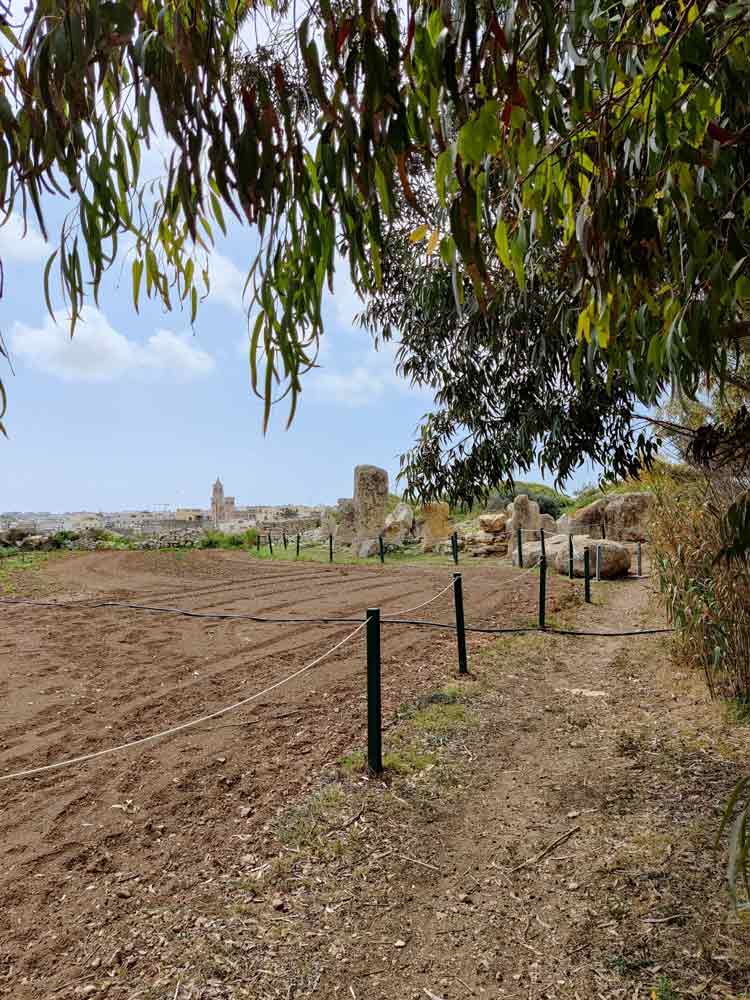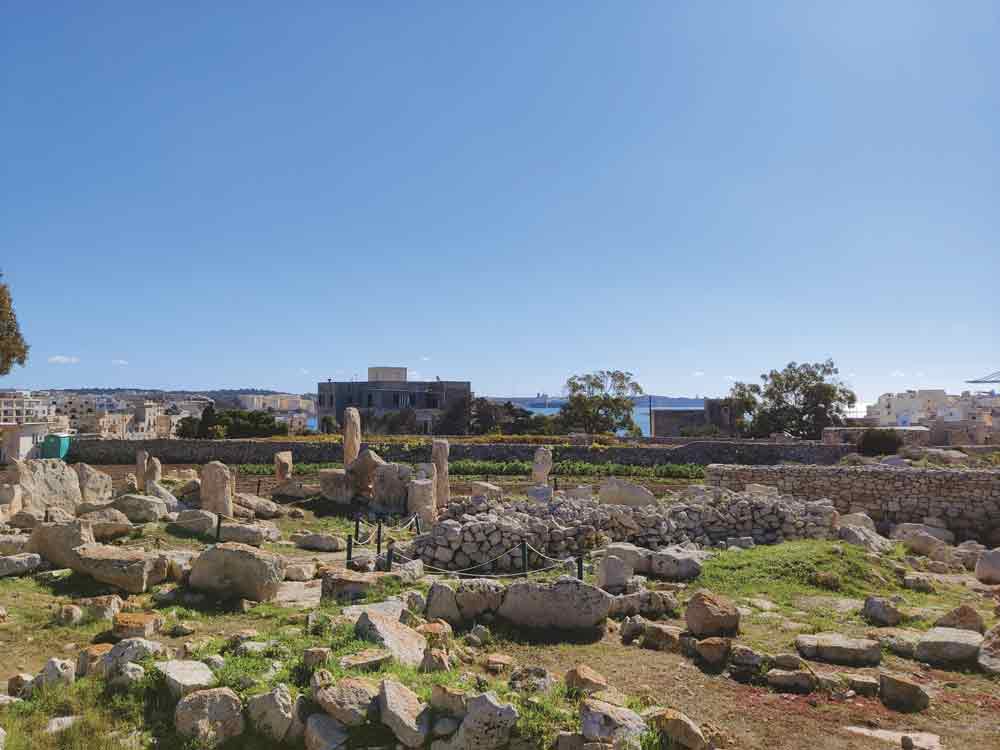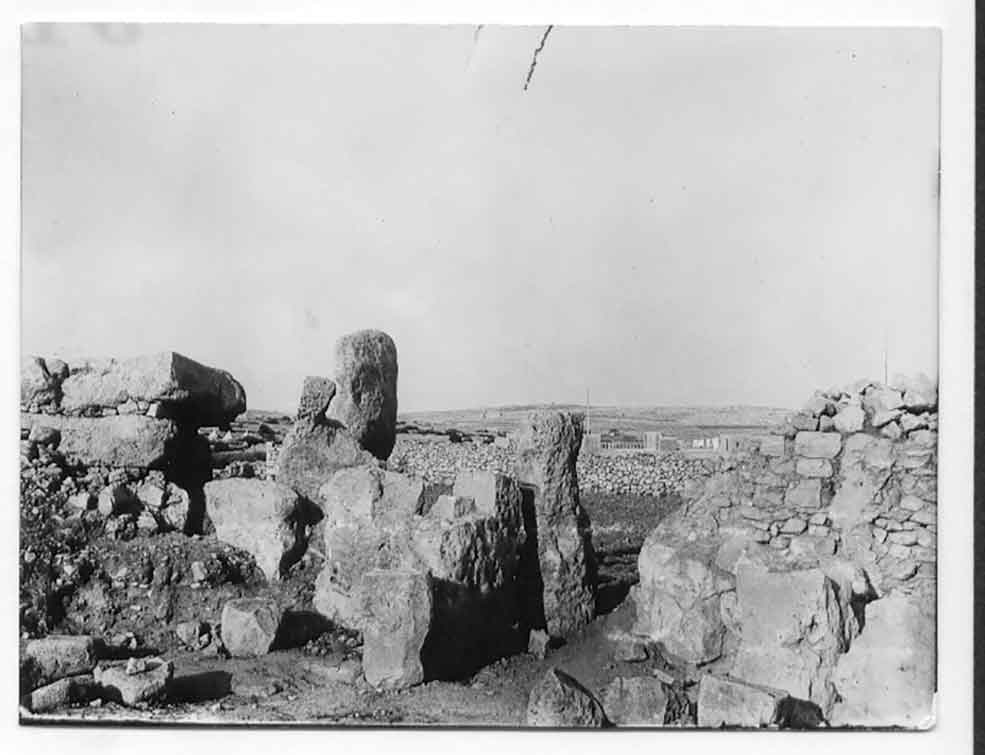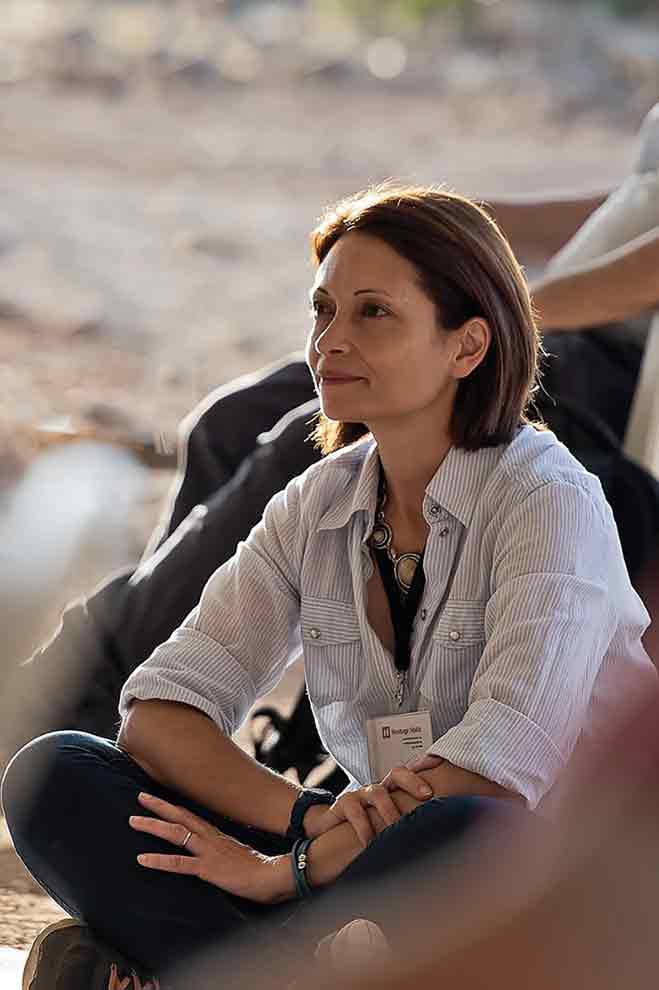THINK takes a trip to explore research and archaeological work taking place at Borġ in-Nadur, overseen by Heritage Malta, which will see the Neolithic site freed from modern-day debris and accumulated material to show the original prehistoric structure in all its glory.
The mass of stones at the top of a hill overlooking Malta’s seaside town of Birżebbuġa looks like another natural feature of the local landscape. Upon a closer glimpse, the rugged shapes transform into a coherent and visible structure. Borġ in-Nadur, literally translated as ‘the mound of stone at the lookout place’, boasts a remarkable characteristic. Extensive research over the years has revealed that the site once served both as a Megalithic structure ground and, later on during the Bronze Age, as a village and fortification.
Preserving our natural heritage often involves peeling away the layers of time. Modern-day rubble and debris litter Borġ in-Nadur, one of Malta’s lesser-known prehistoric sites. Without proper care, this refuse can damage the site and complicate the way we interpret these ancient ruins. THINK’s James Moffett meets up with Katya Stroud and Dr Josef Caruana (Senior Curator and Curator, respectively, with Heritage Malta) to see how they handle these re-excavations.

Photo courtesy of Dr Josef Caruana and Heritage Malta
Stroud and Caruana are leading a team of researchers and archaeologists to conduct conservation works at Borġ in-Nadur. Many of the original excavations around Megalithic sites on the island took place between the 1920s and 40s. They were subsequently left open to the public or ignored. From photographs taken during these past excavations, the team was able to assess the site and find contrasting differences between past and present. ‘We realised there was an accumulation of material which does not feature in the photographs taken during the original excavation,’ states Dr Caruana.
Photo courtesy of Dr Josef Caruana and Heritage Malta
Peeling away the Present
With this in mind, the team decided to remove the unwanted material that had accumulated over time in order to better read and understand the site. By selecting three different sections around Borġ in-Nadur, the team started comparing the present-day remains with the black and white photographs to determine what had changed over time and to ensure that whatever was being removed was modern.
Wind-blown dust, sand, debris, and even abandoned bird nests accrue over time. ‘This is something that occurs naturally in archaeological sites,’ says Stroud. Borġ in-Nadur is surrounded by fields, and several rubble stones — unrelated to the original remains — have ended up within the area itself. If a site is not looked after and not cleared from time to time, such undesirable material will pile up. Reversing this process is one of the primary aims undertaken by Heritage Malta. ‘Partly it’s a re-excavation,’ remarks Stroud. ‘We are rediscovering what there was.’ Unlike the builders of the Tarxien Temples, when Bronze Age settlers in Borġ in-Nadur began construction on a village, they did so by removing the items left by the previous users rather than burying them. To this end, any evidence of what came before is scarce.
These sites mark the birth of monumental architecture. It provides us with Neolithic evidence in Malta and the impact the beginning of agriculture had on communities and how culture affected society.
Although the site itself is not included in the UNESCO World Heritage list, Borġ in-Nadur has equal relevance to other sites around Malta and Gozo. ‘It adds another piece to the whole story,’ explains Stroud. ‘These sites mark the birth of monumental architecture. It provides us with Neolithic evidence in Malta and the impact the beginning of agriculture had on communities and how culture affected society.’

Photo courtesy of Dr Josef Caruana and Heritage Malta
The geographical position of Borġ in-Nadur is similar to several other sites on the Maltese islands; typically, with the sea on one side and land on the other. This relationship between the land and the sea appears to have been an important element in deciding where these sites were built during the Neolithic period. Such areas provide evidence of how these ancient people used to relate with the natural landscape around them and how they used to understand it. Borġ in-Nadur is particular in that it overlooks the sea and rests upon a promontory, flanked by a valley upon each side. As Caruana puts it, ‘this is a strong indication of a lot of activity in that landscape.’
Such areas provide evidence of how these ancient people used to relate with the natural landscape around them and how they used to understand it
A Future for our Past?
A side project involving Heritage Malta called FRAGSUS, led by the University of Malta and the Universities of Cambridge and Belfast, analysed pollen samples taken from one of these valleys. Both oak and pine species were present, while barley was also cultivated in both the Neolithic and Bronze age. Evidence also suggests that grapes were cultivated for a short period around 2,500 BC. These results gave a picture of the vegetation growing during the Neolithic and Bronze Ages. The mystery puzzles put forward by the passing of time are being solved step-by-step, as we learn more about these structures from thousands of years ago. ‘Ironically, the picture we have nowadays of Borġ in-Nadur is significantly more complete than other more well-known sites,’ states Caruana.
Associate Professor Nicholas Vella (Department of Classics & Archaeology, University of Malta) has been researching the site throughout the years with his colleague Professor Davide Tanasi (University of South Florida, US). ‘We were able to identify an earlier fortification wall, throw new light on the date and sequence of the hut remains, identify some of the rock-cut silos where dry food was stored, and present a comprehensive catalogue of the finds that had never been properly published.’ Now they can be.
Archaeologists now have descriptions of all the pottery, stone objects, and animal bones, as well as land and marine molluscs that were retrieved. The research was able to place the Borġ in-Nadur site within context at both local and regional levels. ‘In fact,’ continues Vella, ‘the Maltese appear to have capitalised on their knowledge of seafaring in the Sicily-Malta channel and may have served as pilots for maritime traffic that connected the eastern and western halves of the Mediterranean.’
Future work on the Borġ in-Nadur site looks promising. Plans are in place to analyse two mounds of rock within the megalithic structure, which are not visible in the original excavation photographs and might be due to a more recent intervention. Once the mounds are dug up and the team is certain they can be removed, the site will be more legible, and the relationship with the surrounding environment better understood. This will also allow improvement on the understanding of the site and its place in Malta’s history.
One of the pitfalls in archaeology is when the narrative of the site starts to change. ‘The most important thing for us was not to create false narratives. It’s a problem of dissociation: when the site’s history is separated from reality,’ said Caruana. With this in mind, the removal of modern accumulation is paramount. Once the site is clear of debris, the possibility of academic reinterpretation can happen.
According to Stroud, this was the first phase in a three-stage plan. The works undertaken at Borġ in-Nadur confirmed that certain areas contained modern accretions. Through the fieldwork, the team identified conservation interventions. The next step forward will be to carry out these interventions and remove the modern additions from the area. She explains, ‘Once modern additions are removed, you can start to see and experience the spaces a step closer to what was originally intended.’
Prying through the folds of time, the works taking place at Borġ in-Nadur offer glimpses of undiscovered knowledge and their place and relevance in our island’s history. Providing a comparable example, Vella says: ‘In archaeology, it’s not the beauty of the pottery piece alone that is relevant, but the context within which it was found. That makes all the difference. History is written from context.’









Comments are closed for this article!